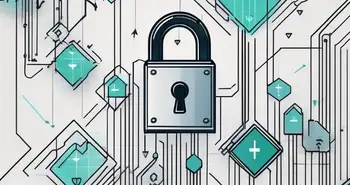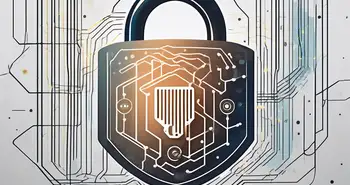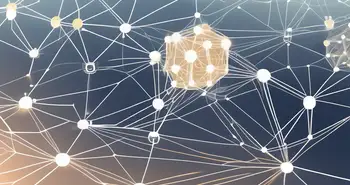Exploring Blockchain Sharding: Solutions for Scalability Challenges

In recent years, blockchain technology has revolutionized the way we think about data storage and security. One of the most exciting advancements in this field is blockchain sharding, a technique that allows for greater scalability and efficiency. In this ultimate guide, I will take you through the basics of blockchain, explain the concept of sharding, outline the process of blockchain sharding, discuss its benefits, and explore the challenges and limitations associated with this innovative approach.
Understanding the Basics of Blockchain
Before diving into the world of blockchain sharding, it is important to have a solid understanding of the basics of blockchain technology. So, what exactly is blockchain?
Blockchain technology has gained significant attention for its potential to revolutionize various industries by providing a secure and transparent way to record transactions. It is essentially a decentralized and transparent digital ledger that records transactions across multiple computers or nodes. This decentralized nature eliminates the need for a central authority, making it resistant to censorship and fraud.
What is Blockchain?
At its core, blockchain is a decentralized and transparent digital ledger that records transactions across multiple computers or nodes. It provides an immutable and tamper-proof record of these transactions, ensuring trust and security in a trustless environment.
One of the key features of blockchain is its transparency, as all transactions are recorded on a public ledger that can be viewed by anyone. This transparency helps to build trust among participants and reduces the risk of fraudulent activities.
How Does Blockchain Work?
Blockchain operates through a network of interconnected nodes that work together to validate and record transactions. These nodes reach a consensus on the status and validity of each transaction, ensuring that all participants have a consistent view of the ledger.
Each block in the blockchain contains a set of transactions, along with a cryptographic hash that links it to the previous block. This creates a chain of blocks, hence the name “blockchain.” Once a block is added to the chain, it becomes nearly impossible to alter previous transactions, ensuring the integrity of the system.
Blockchain technology uses complex cryptographic algorithms to secure the network and ensure the authenticity of transactions. This high level of security makes blockchain ideal for applications where data integrity and trust are paramount, such as financial transactions, supply chain management, and voting systems.
The Concept of Sharding in Blockchain
Now that we have a clear understanding of blockchain, let's delve into the concept of sharding. Sharding is a technique that allows a blockchain network to partition its data and operations across multiple smaller databases called shards. Each shard contains only a fraction of the entire blockchain, enabling parallel processing and improving scalability.
Sharding is a crucial innovation in the blockchain space, offering a solution to one of the technology's most pressing challenges – scalability. By breaking down the blockchain into smaller, more manageable parts, sharding enhances the network's performance and efficiency. This approach not only accelerates transaction processing but also reduces the burden on individual nodes, promoting a more sustainable and robust ecosystem.
Defining Sharding
Sharding involves dividing the blockchain network into smaller segments or shards, with each shard responsible for processing a subset of transactions. Instead of having every node process all the transactions, sharding allows for a more distributed approach, where different nodes oversee different shards.
Each shard in a sharded blockchain operates semi-independently, processing its assigned transactions without needing to consult the entire network for validation. This division of labor streamlines the verification process and minimizes bottlenecks, ultimately enhancing the network's throughput and responsiveness.
The Need for Sharding in Blockchain
As blockchain networks grow in size and usage, the scalability and performance of the system become critical issues. Sharding addresses these concerns by distributing the processing load across multiple shards, enabling transactions to occur concurrently and significantly increasing the network's capacity.
Without sharding, blockchain networks face the risk of becoming congested and slow, limiting their utility in real-world applications with high transaction volumes. By implementing sharding, blockchain platforms can scale more effectively, accommodating a larger user base and a broader range of use cases while maintaining the core principles of decentralization and security.
The Process of Blockchain Sharding
Now that we understand the concept of sharding, let's explore how it works in practice.
Blockchain sharding is a scaling solution that aims to improve the scalability and efficiency of blockchain networks. It involves dividing the network into smaller, more manageable parts called “shards.” Each shard operates independently and processes a subset of transactions, allowing for parallel processing and faster transaction speeds.
How Sharding Works in Blockchain
In a sharded blockchain network, each shard operates independently and processes a subset of transactions. When a transaction needs to be executed, it is routed to the appropriate shard based on predetermined rules, such as the transaction's account address.
By dividing the processing load, sharding allows for parallel transaction processing across multiple shards. This results in significantly faster transaction times and improved overall network performance.
Sharding introduces a new level of complexity to blockchain networks but offers a promising solution to the scalability challenges faced by traditional blockchains. It requires careful design and coordination to ensure the security and integrity of the network while reaping the benefits of increased throughput.
The Role of Nodes in Sharding
Nodes play a crucial role in the sharding process. Each node within a shard is responsible for validating and processing transactions within that specific shard. They communicate with nodes from other shards to ensure cross-shard transactions can be executed securely and efficiently.
Nodes in a sharded blockchain network must maintain communication and synchronization with other nodes to uphold the consistency of the entire network. This coordination is essential to prevent issues such as double-spending and ensure the overall reliability of the blockchain.
Benefits of Blockchain Sharding
Blockchain sharding offers several benefits that enhance the scalability and efficiency of the technology.
Improving Transaction Speeds
Through parallel processing across multiple shards, blockchain sharding significantly improves transaction speeds. With each shard handling a subset of transactions, the overall system can process a higher volume of transactions simultaneously, reducing latency and enhancing user experience.
Enhancing Scalability
Scalability has been a major concern for blockchain networks, particularly with the increasing adoption and usage. Sharding allows for horizontal scalability by distributing the load across multiple shards, effectively increasing the network's capacity as the number of shards grows.
Challenges and Limitations of Blockchain Sharding
While blockchain sharding offers exciting possibilities, it also comes with its fair share of challenges and limitations.
Data Availability Issues
As the blockchain is divided into multiple shards, ensuring data availability across all shards becomes crucial. Techniques such as data replication and cryptographic proofs need to be employed to maintain data integrity and accessibility.
Cross-Shard Communication Complexity
Enabling secure communication and coordination between different shards can be complex. Cross-shard transactions require additional processes to ensure consistency and prevent double-spending, adding complexity to the overall system architecture.
As an expert in the field of blockchain, I have personally witnessed the tremendous potential of sharding in addressing scalability and performance challenges. By partitioning the blockchain network and enabling parallel processing, sharding opens up new opportunities for blockchain adoption across various industries.
Blockchain sharding is a powerful technique that allows for the seamless expansion of blockchain networks. With its ability to enhance transaction speeds and scalability, sharding is revolutionizing the way we think about blockchain technology.
FAQ
What is blockchain?
Blockchain is a decentralized and transparent digital ledger that records transactions across multiple computers or nodes. It provides an immutable and tamper-proof record of these transactions, ensuring trust and security.
What is sharding in blockchain?
Sharding is a technique that allows a blockchain network to partition its data and operations across multiple smaller databases called shards. Each shard contains only a fraction of the entire blockchain, enabling parallel processing and improving scalability.
How does sharding work in blockchain?
Sharding works by dividing the blockchain network into smaller shards, each responsible for processing a subset of transactions. By distributing the processing load, sharding improves transaction speeds and enhances overall scalability.
What are the benefits of blockchain sharding?
Blockchain sharding improves transaction speeds by enabling parallel processing across multiple shards. It also enhances scalability by distributing the load across multiple shards, increasing the network's capacity.
What are the challenges of blockchain sharding?
Blockchain sharding faces challenges such as data availability issues, where ensuring data accessibility across all shards becomes crucial. Cross-shard communication complexity is also a challenge, requiring additional processes to ensure consistency and prevent double-spending.
In conclusion, blockchain sharding holds immense promise in addressing scalability and performance concerns in blockchain technology. By leveraging the power of parallel processing, sharding enables faster transactions and improved scalability, paving the way for a more efficient and scalable blockchain ecosystem.
As we embrace the advancements of blockchain sharding and its potential to revolutionize scalability and performance, it's clear that innovative platforms like Morpher are at the forefront of this transformation. Morpher.com not only leverages the power of blockchain technology to offer a seamless trading experience but also aligns perfectly with the principles of efficiency and democratization that sharding brings to the blockchain ecosystem. With zero fees, infinite liquidity, fractional investing, and the safety of a non-custodial wallet, Morpher is designed for the modern investor. Embrace the future of trading with Morpher's unique platform, and Sign Up and Get Your Free Sign Up Bonus to start trading across multiple asset classes with the innovation that blockchain sharding promises.

Disclaimer: All investments involve risk, and the past performance of a security, industry, sector, market, financial product, trading strategy, or individual’s trading does not guarantee future results or returns. Investors are fully responsible for any investment decisions they make. Such decisions should be based solely on an evaluation of their financial circumstances, investment objectives, risk tolerance, and liquidity needs. This post does not constitute investment advice.

Painless trading for everyone
Hundreds of markets all in one place - Apple, Bitcoin, Gold, Watches, NFTs, Sneakers and so much more.

Painless trading for everyone
Hundreds of markets all in one place - Apple, Bitcoin, Gold, Watches, NFTs, Sneakers and so much more.









